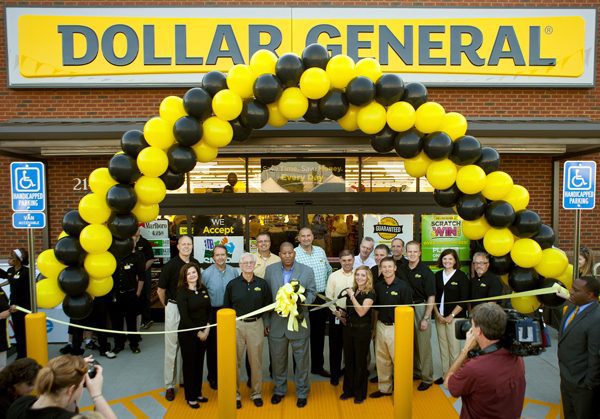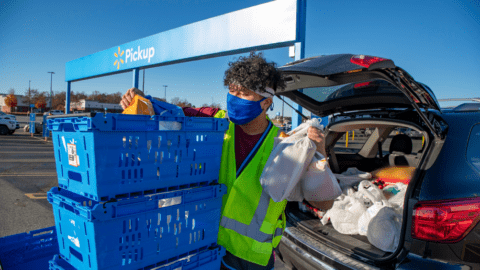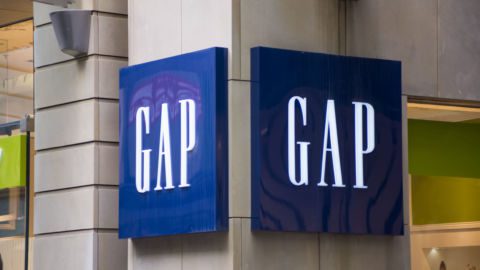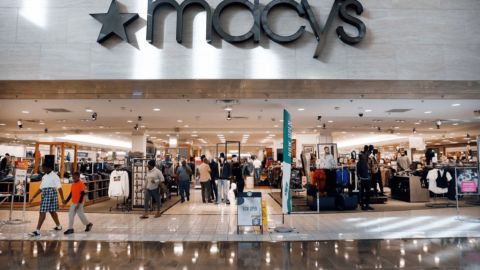Retail sales are predicted to increase 4.1% in 2015, indicating that the industry as a whole is set to have a big year financially, according to the National Retail Federation (NRF). This prediction comes on the heels of a promising holiday season, which saw many retailers end the year with a successful Q4.
Naturally, many successful retailers look to expand their presence to a wider audience as they increase profitability. Some of these merchants opened new brick-and-mortar locations in Q4; and retailers such as Dollar General, Family Dollar and H&M plan to open hundreds of new locations in 2015.
Starbucks is a prime example of this expansion, opening 512 net new stores during Q4 2014, including the first Starbucks Reserve Roastery and Tasting Room in Seattle, Wash., in December 2014. The company also plans to open 100 global Starbucks Reserve stores, which designed to deliver a specialized store experience devoted to highlighting its rare, limited availability coffees.
Advertisement
Additionally, between January 2014 and January 2015, Starbucks opened 767 new stores in the China/Asia Pacific region. Starbucks expects to ramp up this Asian expansion even further within the next few years, as the company looks to open as many as 3,400 stores in China by 2019.
The coffee mogul, which is operating 21,878 stores worldwide as of January 2015, plans to increase its total store count to approximately 30,000 by 2020.
Major Discount Merger Spurs Growth And Competition
Dollar General experienced massive growth during the 2014 fiscal year, opening approximately 700 stores and increasing comparable store sales 4.9% in Q4. The discount retailer plans to open approximately 730 new stores throughout 2015 and is set on relocating or remodeling 875 stores during the year, growing its total square footage by 6%. Beyond 2015, the company plans to accelerate new store openings even further and increase square footage by 7% in 2016.
Dollar General’s growth follows an unsuccessful attempt to acquire fellow discount retailer Family Dollar, which instead merged with Dollar Tree after its shareholders approved an $8.5 billion takeover bid.
Family Dollar is still awaiting regulatory approval of the deal, which Dollar Tree expects to close in May 2015, according to a company statement. As set for by the Federal Trade Commission, Dollar Tree must sell approximately 340 stores before the merger officially closes.
Through the first half of the company’s fiscal 2015, Family Dollar has opened 161 new stores, compared to only 22 closings. When the merger is finalized, Dollar Tree will control more than 13,000 stores under the Dollar Tree and Family Dollar brands, leaping past Dollar General, which has approximately 11,800 stores.
Family Dollar increased total net sales 3.0% throughout the quarter, boosting comparable store sales 0.5%.
Another discount retailer, Five Below, had a successful Q4, seeing its net profit rise 34% and net sales increase 24.4%. Same-store sales for the quarter rose 3.2% from the previous year’s totals, outpacing the company’s initial 3% growth. The company has plans to add approximately 70 more stores in 2015. Although Five Below only opened one new store in Q4, it opened 62 throughout the 2014 fiscal year.
H&M, Ulta Undergo Massive Expansions
Ulta Beauty opened 10 stores during Q4 2014 and 100 throughout the year, experiencing a 14% year-over-year increase in square footage. The beauty products retailer continues its growth plans into 2015 and intends to build another 100 net new stores and remodel four locations throughout the fiscal year, which will expand its square footage by 13%.
Net income at Ulta grew 23.5% in the quarter to $87.3 million, with comparable sales increasing 11.1%. A 7.7% growth in transactions and 3.4% average ticket growth contributed to the same-store sales jump. The retailer forecasts same-store sales growth of approximately 6% to 8%.
After posting a 36% increase in net profits during the quarter, H&M confirmed plans to open approximately 400 net stores in 2015, including a 61,000 square foot flagship store in Manhattan’s Herald Square. The fashion retailer expects to increase the number of its stores 10% to 15% per year as part of its growth plan. H&M opened 40 net new stores during Q4 2014, with 16 breaking ground in the Asia and Oceania region.
The company will focus much of its expansion internationally, with stores planned for Taiwan, Peru, Macau, South Africa and India. The first H&M store in Taipei, Taiwan, opened in February 2015 and was well received, according to a company statement.
Closures Affect Even The Biggest Name Brands
While store openings have gained prevalence as the economy continues to bounce back, many retailers continue to struggle to find success as the industry adapts to technology and omnichannel trends. Retailers may have very little choice but to close stores that are becoming unprofitable. Surprisingly, this problem has even affected traditionally popular retailers that have been consistently profitable for decades.
In January, Macy’s announced it would close 14 department stores in spring 2015. This follows a disappointing fiscal 2014 in which the company closed 22 locations and opened only five stores.
Q4 sales are up 1.8% from the prior year, while comparable store sales on an owned plus licensed basis grew 2.5% during the quarter.
As part of its plans to restructure the company, Macy’s acquired spa and beauty retailer Bluemercury for $210 million. The brand operates 60 stores in 18 states, and now gains a presence within some Macy’s stores, with some locations adding Bluemercury products and in-store boutiques.
Sears plans to spin off 254 stores to a separately owned Real Estate Investment Trust (REIT), generating as much as $2.5 billion for the retailer. The company already has closed 234 underperforming Sears and Kmart stores during fiscal 2014, with Q4 sales declining 24% to $8.1 billion. Sears Holdings, owner of Sears and Kmart stores, has attributed the $2.5 billion sales decline largely to the spinoff of the Land’s End brand and the sale of a significant stake in Sears Canada, according to a company statement.
Net losses for the retailer reached $159 million, which was a vast improvement from the $358 million loss in Q4 2013. Quarterly comparable store sales throughout the company slipped 4.4% in the U.S., as Kmart declined 2.0% while Sears stores fell 7.0%.
Numerous Apparel Retailers Find Difficulty Keeping Up
While Aéropostale posted its first adjusted operating profit in the last eight quarters in Q4 2014, it will continue to close stores in 2015. The apparel retailer closed 77 Aéropostale and 115 P.S. from Aéropostale stores, and has stated it will likely close between approximately 50 to 75 additional stores in the 2015 fiscal year.
The retailer experienced a net loss of $13.5 million in the quarter, a major improvement on the $70.3 million loss the prior year.
Aéropostale expects to invest $16 million in infrastructure investments and the remodeling of 13 stores in 2015, according to a company statement.
Abercrombie & Fitch (A&F) is another apparel retailer falling on hard times, scheduled to close approximately 60 stores in fiscal 2015 through natural lease expirations. As many as 70% of the company store leases are set to expire within the next three years, indicating that the trend of store closures will likely continue as the retailer is focused on cutting expenses.
A 10% decline in comparable sales drove Q4 net sales results at A&F, which dropped 14%.
On the bright side for A&F, the company plans to open 11 outlet stores in the U.S. in 2015, and has plans to open 15 full-price stores in foreign markets such as China, Japan and the Middle East.
Upon releasing its Q4 report, Chico’s FAS noted that it planned to shut down approximately 120 underperforming stores over the next three fiscal years, including 35 stores in fiscal 2015. The company estimates that this move will save $55.2 million.
During the quarter, the women’s apparel retailer opened eight new stores while shutting down 18 stores.
The store closures are part of an organizational realignment plant, which also includes the termination of 240 employees, or approximately 12% of the company workforce in its Fort Myers, Fla. headquarters.
Costco, Kroger Still Dominate Subsectors
In the midst of all the store openings and closings that have created volatility throughout the industry, major retailers such as Costco and Kroger continue to stay ahead of the competition in their respective subsectors.
Costco increased its quarterly net income 29.2% to $598 million, while net sales rose 4.3% to $26.9 billion. Net sales included an increase of 8% in comparable store sales, excluding negative impacts from gasoline price deflation and foreign exchange.
Additionally, the warehouse retailer’s net income received a $57 million boost from a tax benefit in connection with a special cash dividend to the company’s 401(k) plan participants, according to Richard Galanti, CFO of Costco.
Kroger reported a 23% increase in Q4 profits, with help from its acquisition of Harris Teeter Supermarkets in January 2014 and an increase in fuel margins. Total quarterly sales were $25.2 billion, increasing 8.5% year-over-year. Additionally, the company’s total active workforce grew by nearly 25,000 during 2014, with 90% of the jobs taking place in the company’s supermarket divisions.














